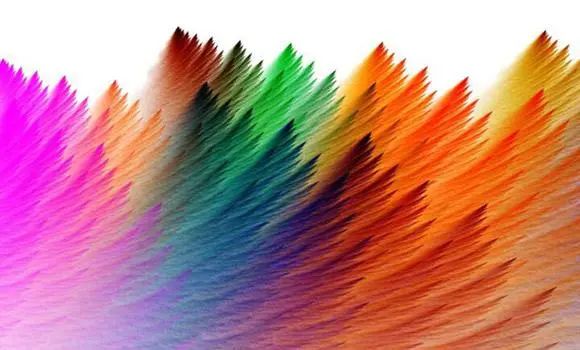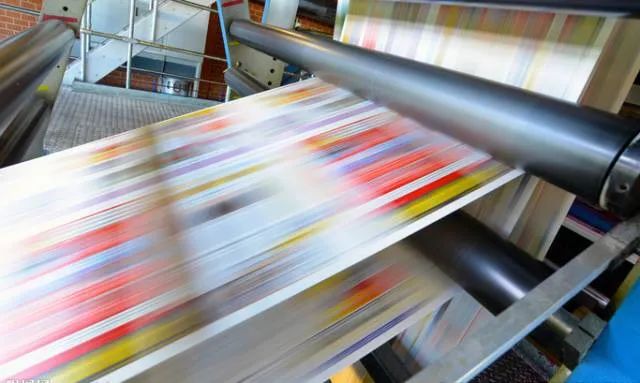Seven steps to solve the problem of uneven printing ink color
Time:2025-11-18
Views:0
1. Poor precision of the rubber roller, improper adjustment of the rubber roller position and too hard rubber cause uneven ink distribution
When the rubber roller shaft head is worn or the rubber roller has poor contact with the ink-transmitting iron roller, it is impossible to achieve relatively uniform ink distribution and ink transfer. In addition, when the gel of the ink roller is too hard, it is prone to slipping during the ink distribution process on the plate, causing defects such as printing line marks and uneven ink application, which affects the printing quality of the plate.
2. The grinding loss of the iron roller of the ink fountain is severe, and the edge of the steel sheet is in a curved shape
It causes an imbalance in ink supply, resulting in an uneven ink layer. When these situations occur, corresponding repair measures must be taken. Try to keep the iron roller in good concentricity and grind the edge of the steel sheet into a straight line, so that the ink output of the ink roller on the ink fountain can be flexibly controlled, and avoid uneven color distribution in the longitudinal direction of the printed matter.
3. Uneven ink color caused by excessive ink viscosity and a thick ink layer
When the stroke of the ink fountain iron roller is adjusted too little and the gap between the steel plate and the iron roller is adjusted too much, the ink layer on the ink fountain roller will be thick and difficult to be evenly coated. After being transferred to the plate surface and embossing, fine scale spots often appear. This is the result of the paper‘s adsorption force on the ink being less than the ink‘s adhesion on the printing plate.

4. Uneven printing pressure or insufficient firmness of the plate support
The ink layer on the plate cannot be evenly transferred onto the substrate. When the printing pressure is uneven or insufficient, the ink layer on the plate cannot be evenly or completely transferred to the substrate, resulting in inconsistent ink thickness or incomplete ink application on the printed matter. In addition, if a wooden base is used in the letterpress printing process to print large-area plates, due to the base being prone to compression deformation and having insufficient firmness, the ink layer of the printed matter often becomes uneven and unsolid. For batch products, it is also easy to have inconsistent ink intensity from the front to the back. Therefore, in the letterpress printing process, it is advisable to use metallic plates to support the adhesive plates to ensure the printing quality.
5. The printing area is too large, and the structure and performance of the equipment are not compatible, resulting in uneven ink layers
The larger the printing plate, the stronger the adhesion between the ink layer and the printing plate. As a result, during the embossing process, due to the imbalance between the adhesion between the ink and the printing plate and the paper‘s adsorption force for the ink, it is inevitable that some areas will break, causing the ink layer to crack and thus unable to transfer evenly and completely onto the paper surface. Therefore, when printing large-area plate products, it is advisable to use a rotary platform printing press with a rotary flatbed structure or a rotary rotary printing press with a rotary rotary type to ensure uniform ink color.
6. Insufficient ink flow and stroke cause uneven ink color in strips
The difference in ink layer thickness in the longitudinal direction of printed matter is also a common situation in plate printing. This is due to the structural defect of the ink fountain, which cannot be adjusted to achieve a very precise uniformity of longitudinal ink delivery. Therefore, some automated printing machines are equipped with several sets of iron rollers for ink transfer, and the size of their transfer stroke can be adjusted at will. When printing products with a large ink volume, the transfer stroke of the iron rollers for ink transfer should also be increased to ensure the uniformity of ink distribution.

7. The printing line marks cause uneven ink layer density
The so-called printing "bar mark", also known as "glue return shadow", is commonly called "glue roller mark". It is also a common process defect in plate printing, that is, there is one or more distinct line shadow marks with obvious differences in ink intensity on the horizontal position of the printed matter, which greatly affects the aesthetic appeal of the product. The causes of printing line marks are multi-faceted, including operational technical reasons as well as process factors.
If the printing plate is not placed evenly or too high, the printing pressure is too heavy, the ink roller is too hard and prone to slipping or its height is not properly adjusted, the number of ink rollers used is insufficient, the ink distribution is inadequate, or the rubber roller shaft head is worn and has a gap, all these are the sources of printing bar marks.
In addition, factors such as the color phase of the ink, the difference in ink color intensity, and the improper adjustment of ink viscosity are also among the causes of printing line marks. Therefore, it is necessary to strictly control every link of the printing technology process to effectively prevent the printing defect of uneven ink layer.
In conclusion, the reasons for the uneven ink color in plate printing are multi-faceted and must be carefully analyzed. Targeted measures should be taken to strictly control the printing process technology to ensure the printing efficiency and quality.














